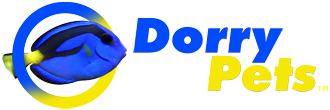Fall and Winter-Feeding Tips for Pond Fish
April 18, 2024
How you feed your fish in the fall and winter can have a significant impact on their health through the winter to the spring. Spring is a time when fish are less hardy from winter and the fluctuating temperatures add to their stress level, making them vulnerable to disease.
A hearty and balanced diet during fall can help give your fish the nutrition they need to successfully overwinter. For instance, the diet of a Koi in the wild would include fish, mollusks, crabs, and basically everything else that moves. A Koi will enjoy eating anything that lives in water, but it's best to cook these first to make sure parasites or disease will not be transmitted to your prize fish. Feeding your fish insects such as spiders, grubs, and worms on a regular basis can add great health benefits. Just make sure the creature won't bite the fish. You can even feed commercially available dried insects.
Goldfish do not eat as much food as Koi, but often eat insects in and on the water's surface and would benefit from a variety in their diet also. Fancy Goldfish, though, can have problems sucking in too much air when taking food from the surface, causing swim bladder problems. For this reason, it is wise to feed them food that slowly sinks.
Floating food such as flakes, or dried insects should be soaked first before feeding. For all types of fish this can be a great way to add vitamins to their diet. Vitamins B and C, and spirulina are great supplements as well as a small amount of wheat germ oil. Fish oils can be a reliable source of energy for your fish.
As the cooler temperatures arrive, you'll want to start getting your fish ready for the winter ahead. To feed your fish correctly, you need to monitor the water’s temperature. If you do not have a thermometer, this is the time to get one.
Once the water temperature lowers to 21°c, your fishes' staple food should be mixed with a wheat germ base that is lower in protein. When the water temperatures reach 15°c the stable food should be switched to wheat germ based foods exclusively. Proteins are much harder to digest than other nutrients. The wheat germ diet can continue to be fed all winter if the water temperature doesn't get below 10°c. At 12°c the fish's metabolism starts to slow, reducing its intake requirements. Once the water temperatures go below 10°c, it's time to stop feeding until spring. Important: Do not feed if there is any chance of the temperatures dropping below 10°c within a few days. Fish are not capable of proper digestion in cold water and the food can decay in their system, sending bacteria into the bloodstream and killing the fish.
At 13°c the fish's metabolism starts to slow, reducing its intake requirements. Once the water temperatures go below 5°c, it's time to stop feeding until spring.
Anytime you are feeding when it's below 15°c, keep in mind the bacteria in your filter are also slowing their activity. They no longer reproduce, and they will die off or go dormant when extreme water temperatures are experienced. It's a good idea to test the water regularly to make sure ammonia and nitrite aren't showing up. A great diet to end the year and start in spring would include a mild antibiotic soaked in the food. Do not add antibiotics to the water as they can damage the natural balance in your pond.
Also in Articles
Follow
OPENING TIMES
Monday to Thursday : 09h00 - 17h30
Friday : 09h00 - 16h00
Saturday : 09h00 - 13h30
Sunday : 10h00 - 13h00
Public Holidays : 09h00 - 13h00




